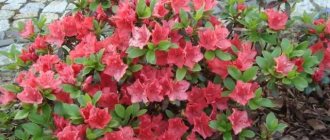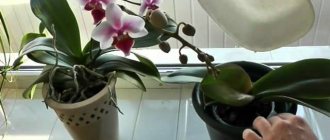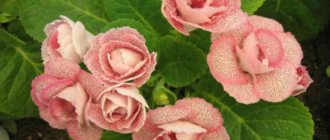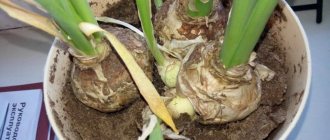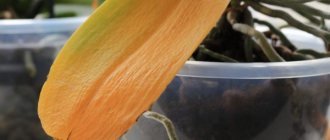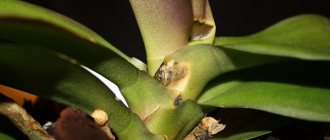Caring for peonies is not limited to just flowering, so it is important to know what to do next with the flowers.
Dear readers! For you, we have created communities on social networks in which useful articles and interesting ideas are published several times a day! Subscribe and receive useful content in a convenient format!
At the same time, the care algorithm itself does not have any difficulties. It is important to know the main work and the timing of its implementation.
We will tell you exactly what to do with flowers in today’s article.
Where to start caring for peonies after flowering?
The garden beauty blooms for only a few weeks.
Further care is needed, since the time after flowering is of great importance for the plant. If everything is done correctly, then next season the flower will again delight you with beautiful large flowers.
After the perennial has flowered, it begins to prepare for frost, and it will need additional strength, and, therefore, your help.
In addition, renewal buds begin to form at the base at approximately the same time. They will become the basis of a new flower next spring.
Peony care after flowering can be divided into several components. Here's what to do:
- Cleaning . To prevent fallen leaves and dry inflorescences from becoming a refuge for fungal spores and a home for parasites, they must be removed.
- Watering . Another important stage, which will be discussed in more detail.
- Loosening the soil . It is required for air to penetrate to the root.
- Feeding . An exhausted peony needs it after flowering.
- Trimming . It also has its own rules, which will be described below.
Preparing peonies for winter
Caring for lilies after flowering
Late autumn is the time to trim peony bushes. Pruning is done when the first frost occurs. Shoots are pruned at ground level.
Preparing peonies for winter
Also, do not delay pruning, since in this case the root system may rot. Winter can destroy the plant.
The cut should be made as low as possible, since even a small stump left for the winter will inhibit the growth of shoots and reduce the quantity and quality of flowers.
If your area experiences harsh winters, the best way to protect your bushes from low temperatures is with mulch.
The thickness of the layer depends on the region. If cultivation is carried out in a temperate climate, then the thickness should be 10-12 cm, and in the northern region - up to 20 cm.
It is best to use humus for shelter. When spring comes, this mulch is removed.
High-quality care for peonies will allow you to decorate your garden with large and beautiful flowers with a wonderful scent.
0 0 votes
Article rating
When to prune peonies after flowering?
Fading flowers of faded peonies can and should be trimmed. Otherwise, dry petals will fall inside the peony and create conditions for the development of fungus (gray rot).
What needs to be done for different varieties is described below.
Herbaceous varieties
There is no need to touch the bush itself even when the stems and leaves turn yellow. That is, in August and September.
Even if the peony looks unattractive, there is life in it. It prepares for the next year by forming renewal buds underground. Without the plant part, their formation will be impossible.
Wait until late autumn, and then it will be possible to prune the parts protruding above the ground. The ideal time would be the first frost. After pruning, cover the base of the peony with humus, which will protect the buds and root system from the cold. With the onset of warmth, humus will serve as an excellent fertilizer for peonies. Layer height – 10 cm.
IMPORTANT ! Pruning must be done with sharp pruning shears.
Tree species
Pruning for tree varieties is done differently.
The process takes place in early April. At this time, remove all weak, dried and broken branches. When the buds appear, final pruning is done. Break off unnecessary shoots that can thicken the peony.
REFERENCE. A tree-type peony always takes up more space than a herbaceous one. It can be shaped like a tree or a large bush.
After flowering, pruning of tree peonies is carried out in the same way as with ordinary herbaceous peonies. That is, dry inflorescences are removed. But in autumn these varieties are not pruned; they will need shelter.
Superphosphate for fertilizing peonies
During the period of bud formation, it is very good to feed peonies with superphosphate. This is a complex fertilizer that contains phosphorus. Simple superphosphate contains up to 20%, double superphosphate – up to 50%. It contains nitrogen, sulfur, boron, molybdenum, and calcium sulfate. Such a rich composition promotes better development of the root system and prolongs the opening of buds. The stems become more elastic, and the flowers have brightly saturated colors.
Since superphosphate is poorly soluble in water, it is applied by embedding it in the soil or preparing an extract from it. To prepare the extract, take 3 tsp. double superphosphate and pour 0.5 liters of boiling water, stir the solution and leave for 6-8 hours. Then the upper liquid part is drained from the jar, and half of the drained extract is diluted in a bucket of water and fertilized as with other fertilizers.
When to feed peonies after flowering?
Despite the fact that the peony is particularly unpretentious, and it needs feeding. After flowering, adding nutrients will help the crop gain strength for future flowering.
First, apply organic fertilizers, such as mullein infusion.
You need to do this: dig a small groove around the perimeter. Pour mullein infusion into it, prepared in a ratio of 1:10 with water.
Next, mineral complexes are added. The optimal time for this is August. Choose phosphorus-potassium mixtures, since nitrogen fertilizers are not particularly needed in the autumn.
This feeding will be needed in the range of 30-40 g per bush. They are also introduced around the peony into the dug groove. Next, when the dry fertilizer is scattered, add water and fill the groove with earth.
It is also advisable to carry out one foliar feeding. Choose a dry day and spray the peony bush with trace elements.
REFERENCE. As an example, you can take the nutrient liquid “Agricola” or similar ones. It is diluted as follows: for 1 liter of water - 5 ml of the drug.
Mandatory feeding
A peony can grow in one place for many years. Over time, the soil becomes depleted, so it is necessary to replenish the supply of nutrients, otherwise there will be no quality flowering. Nitrogen fertilizers are traditionally applied at the beginning of the season. After flowering, peonies need fertilizing with a predominance of phosphorus and potassium.
Fertilizer should be applied in August. Feeding should especially not be skipped if this season the bushes had small flowers that quickly withered and pale leaves. Fertilizer granules can be applied in dry form. To do this, use per 1 sq. m:
- 25–30 g superphosphate;
- 20 g of potassium magnesia;
- 15 g potassium sulfate.
Planting peonies in open ground in spring: 5 tips
You can add 45–50 g of potassium monophosphate, which contains 2 essential elements at once. Chemical fertilizers will be replaced by wood ash (spread 200 g under the bush and water). Fertilizers in liquid form are also well absorbed by peonies. For this purpose, a complex composition with macro- and microelements is used.
Watering a fertilizer solution into the hole has worked well. 3-4 holes are made along the perimeter of the bush, into which sections of water pipe are inserted. Thus, the nutrient solution goes directly to the roots of the plant. Towards mid-autumn, the soil is mulched with compost, which will gradually feed the plant until spring.
Features of watering flowers after flowering
In order for the plant to form buds correctly, moist soil is necessary. Some gardeners stop irrigating the perennial after flowering, but this is wrong. The flower will become stressed, which will cause the formation of weak buds.
Irrigation is required if the summer is dry. At the same time, the volume of water is reduced gradually. So, for example, if you used 25 liters of water to water each bush, then you should do it as follows: first up to 15 liters, then up to 10 liters, and so on until irrigation stops completely.
Transfer
This procedure after flowering is carried out if the peony bush has grown greatly and begins to interfere with its growing neighbors. In addition, sometimes a transplant is needed if the place for peonies is chosen incorrectly: it is either too sunny, or too wet or shady.
Replanting is done in the fall. It is necessary to dig out the bush carefully, after thoroughly moistening its roots. A large amount of water will help you more carefully remove the bush from the ground without damaging its roots. The stems are tied together before removing their holes. It is better to pry the plant with a pitchfork so as not to cut the rhizomes with a shovel.
The plant is then inspected and damaged and rotten roots, if any, are removed. Then they dry it a little in the air and plant it in a new hole.
The bush is located in the center of the hole, its root is watered, and then it is only covered with soil. Please note that the plant buds are located at a depth of up to 5 cm. If they are buried too deep, the stem may rot later.
If the bush is already quite mature (4-5 years) and has grown greatly, it is recommended to divide it when replanting. This will allow you to get several healthy, full-fledged peonies from one plant at once, which will be able to bloom next year.
Peony is a poorly adaptable flower, so it is traditionally “sick” for the first month or two after transplantation. Then, with proper and attentive care, it recovers on its own. Care after transplantation should include mandatory root watering and foliage spraying. In addition, the soil in the garden bed should be loosened regularly so that the soil is well permeable.
How long after flowering can peonies be replanted?
Peony is a plant that requires regular replanting. If this is not done, then the varietal characteristics will disappear over time, first the flowering period will be shortened, then the flowers will be crushed.
Experienced gardeners recommend replanting at least once every 5 years.
The optimal time for transplantation is considered to be the end of August - beginning of September.
The conditions for transplantation will be as follows:
- Choosing a location. This issue needs to be approached thoroughly. Since peony is a heat-loving plant, choose areas with good access to light. In addition, air movement should be free, but without the risk of drafts. The ideal place is partial shade during the day.
- Preparation . The day before digging up the perennial, soften the soil around it as much as possible.
- Soil selection . The best substrate for perennials is a loamy soil base. In areas with a predominance of sandstones, a mixture of compost mixed with clay is added to the soil.
The planting hole is dug 55–70 centimeters in size, both in depth and width. If several bushes are transplanted, then the distance between them should be at least 1 meter.
Next, to provide a drainage layer, a mixture of crushed stone, crushed red brick and river sand is placed at the bottom of the pit. The thickness of this layer should be within 20 cm. Next is a layer of nutrient substrate that will cover the hole by 50 cm. It consists of a mixture of peat, humus, and turf.
When can peonies be propagated?
You can increase the number of perennials on your site in various ways:
- dividing the bush;
- cuttings;
- kidney renewal;
- using layering.
Each method has its own period for reproduction.
- The division of the bush is carried out closer to autumn and can take place until the second ten days of September.
- Not all varieties of crops have seeds due to their varietal characteristics, so propagation by this method is not so popular. Mostly herbaceous varieties reproduce by seeds. Seed material is collected in August and September.
- Propagation by root cuttings serves as an additional method when dividing a bush. This way you can get much more material and much more guarantees that the peonies will take root. Layers are usually planted in the fall.
What else needs to be done with peonies after flowering?
For a flower, it is important that the soil is regularly mulched and loosened. It should be light and breathable. Therefore, after each watering, you should loosen the soil around it.
Mulch can not only retain moisture, it also helps control weeds. Thus, the created layer of 5-7 cm will significantly reduce the amount of weeds.
In addition, mulching will protect the soil from overheating, which prevents the roots from overheating.
Mulching is carried out using peat or humus.
Features of care for tree varieties after flowering
After the tree-like flower has bloomed, the stems are cut to the upper axillary bud. This way the flower will not lose additional strength.
Be sure to apply fertilizer before the onset of cold weather. To do this, for each copy the following is entered:
- bone meal - approximately 200 g;
- wood ash - about 300 g.
Despite the fact that tree peonies are frost-resistant, they are still covered for the winter. This is done so that during the thaw the buds that awaken in the open air do not die during the next frost.
How to feed peonies with bone meal
Ready-made bone meal can be purchased at gardening stores. Bone meal decomposes in the soil gradually and its effect is from 6 months to 3 years. Therefore, it is advisable to apply it to the soil in the fall. But by spring, the root system will strengthen faster, the plant will grow stronger faster, more shoots with buds will appear, and flowering will improve.
The high content of phosphorus (29-34%) and calcium (up to 45%) has such a positive effect on the plant. Even a small amount of nitrogen (only 1%) and a wide range of microelements contributes to the rapid growth and rapid blooming of buds. But there is no potassium, so when fertilizing you should add wood ash to the soil.
Bone meal is added in powder form for digging in the fall or loosening in the spring. It is enough to sprinkle the powder into the root circle, 2-3 handfuls per plant, followed by embedding into the soil. Or make a hood. To do this, 50 g of powder is diluted in 1 liter of hot water, mixed and left to infuse for several hours. Stir occasionally. The finished infusion is then diluted in 20 liters of water and watered over the plants.
Tricks of gardeners and vegetable gardeners
Every experienced gardener has accumulated knowledge of care that allows them to achieve excellent flowering. Below are some tips for better growth of different types of flower:
- If you plan to propagate a tree peony by division, you should know that the plant should already be 5-6 years old at that time. For the process, select the month of August.
- If you cut off the shoots of a peony during the flowering period, it will weaken greatly and its buds will then become small.
- After planting a plant, it may not bloom for 2 years, so you should not worry during this period. You can sound the alarm after the peony does not bloom in the third year of its growth.
- To mulch the soil around the flower, use humus, hay or sawdust. In addition to their protective functions, such components will serve as additional fertilizer.
ATTENTION! When mulching the soil under a peony, it is not advisable to use peat, since this type of flower does not develop well on peat soils.
Protection against fungal diseases and pests
If it's a cold and rainy summer, peonies can get a fungal infection. In this case, the plants will be weakened and will need restoration. Of course, in this case, peonies will not bloom well. The crop can be affected by various rots, rust, brown and brown spots, and powdery mildew.
For prevention, fungicides are applied three times a season. Suitable:
- "Fundazol";
- "HOM";
- "Topaz";
- "Strobe."
All drugs are used according to the instructions. Leaves with signs of damage are immediately removed to prevent the disease from spreading. If pests (aphids, thrips, bronze beetles) are noticed on peonies, they are eliminated with the help of insecticides.
Common mistakes
Often inexperienced gardeners wonder: why there is no flowering, why the flower is sick, etc. Much depends on the errors made in caring for the flower. Here are some common mistakes new gardeners make:
- Planting a plant in wetlands causes its roots to rot.
- Planting peonies against a wall. In summer this leads to overheating, in winter and spring to the appearance of snow debris and dripping.
- Landing in a hole that is too deep or, on the contrary, shallow.
- Lack of preventive measures against diseases and pests.
- Removing all the leaves and stems of the peony after flowering, which is fundamentally wrong.
What do peonies get sick with in summer?
Gardeners often cut peonies at the root immediately after flowering for another reason that various fungal diseases develop on the green parts of the plants. Immediately after flowering, the plants are inspected for any spots, holes on the leaves, or changes in leaf color. The discovery of brown spots indicates a rust infection. In this case, the peony is treated with colloidal sulfur. Limp stems and leaves, the appearance of yellowness - all this is a sign of rotting roots.
Summer rains can provoke or aggravate the process of rotting that has already begun in spring. In this case, transplanting the plant to a new location is added to the usual procedures. It is produced in dry weather, but not in drought. Diseased parts of the roots are removed, the root system is treated with a solution of potassium permanganate or the drug "Maxim".
When brown spots with a yellow tint appear on the leaves, the bushes are treated with Gamair. This is done twice with an interval of 8-10 days.
For prevention, immediately after flowering, plants are sprayed with Bordeaux mixture, and vitriol can also be used.
Answers to frequently asked questions
Here are the questions often asked by readers who want to grow beautiful peonies on their plot:
Is fertilizing required?
You can do without it, but the flowering will no longer be so lush and large.
What is the optimal size of a hole dug for planting a flower?
When there is a layer of soil 5-7 cm above the upper bud.
When is the best time to pick flowers for a vase and how long do they last when cut?
Cut peonies can last in a vase for up to 10 days. But it’s better to cut peonies in buds, so they will last even longer. The best time of day for cutting is early morning or evening.
